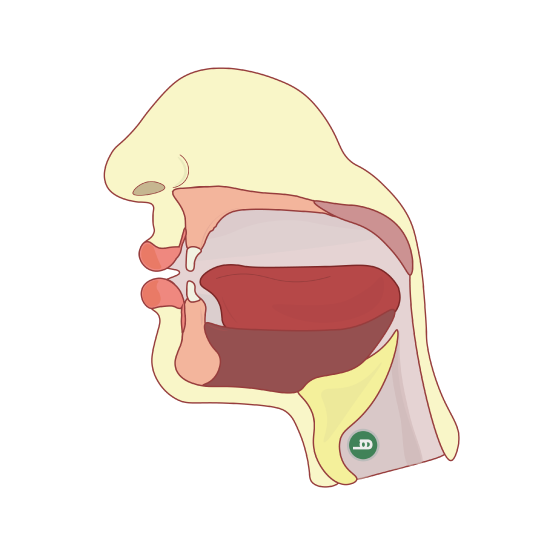10.2: Letter Haa
- Page ID
- 275094
\( \newcommand{\vecs}[1]{\overset { \scriptstyle \rightharpoonup} {\mathbf{#1}} } \)
\( \newcommand{\vecd}[1]{\overset{-\!-\!\rightharpoonup}{\vphantom{a}\smash {#1}}} \)
\( \newcommand{\dsum}{\displaystyle\sum\limits} \)
\( \newcommand{\dint}{\displaystyle\int\limits} \)
\( \newcommand{\dlim}{\displaystyle\lim\limits} \)
\( \newcommand{\id}{\mathrm{id}}\) \( \newcommand{\Span}{\mathrm{span}}\)
( \newcommand{\kernel}{\mathrm{null}\,}\) \( \newcommand{\range}{\mathrm{range}\,}\)
\( \newcommand{\RealPart}{\mathrm{Re}}\) \( \newcommand{\ImaginaryPart}{\mathrm{Im}}\)
\( \newcommand{\Argument}{\mathrm{Arg}}\) \( \newcommand{\norm}[1]{\| #1 \|}\)
\( \newcommand{\inner}[2]{\langle #1, #2 \rangle}\)
\( \newcommand{\Span}{\mathrm{span}}\)
\( \newcommand{\id}{\mathrm{id}}\)
\( \newcommand{\Span}{\mathrm{span}}\)
\( \newcommand{\kernel}{\mathrm{null}\,}\)
\( \newcommand{\range}{\mathrm{range}\,}\)
\( \newcommand{\RealPart}{\mathrm{Re}}\)
\( \newcommand{\ImaginaryPart}{\mathrm{Im}}\)
\( \newcommand{\Argument}{\mathrm{Arg}}\)
\( \newcommand{\norm}[1]{\| #1 \|}\)
\( \newcommand{\inner}[2]{\langle #1, #2 \rangle}\)
\( \newcommand{\Span}{\mathrm{span}}\) \( \newcommand{\AA}{\unicode[.8,0]{x212B}}\)
\( \newcommand{\vectorA}[1]{\vec{#1}} % arrow\)
\( \newcommand{\vectorAt}[1]{\vec{\text{#1}}} % arrow\)
\( \newcommand{\vectorB}[1]{\overset { \scriptstyle \rightharpoonup} {\mathbf{#1}} } \)
\( \newcommand{\vectorC}[1]{\textbf{#1}} \)
\( \newcommand{\vectorD}[1]{\overrightarrow{#1}} \)
\( \newcommand{\vectorDt}[1]{\overrightarrow{\text{#1}}} \)
\( \newcommand{\vectE}[1]{\overset{-\!-\!\rightharpoonup}{\vphantom{a}\smash{\mathbf {#1}}}} \)
\( \newcommand{\vecs}[1]{\overset { \scriptstyle \rightharpoonup} {\mathbf{#1}} } \)
\(\newcommand{\longvect}{\overrightarrow}\)
\( \newcommand{\vecd}[1]{\overset{-\!-\!\rightharpoonup}{\vphantom{a}\smash {#1}}} \)
\(\newcommand{\avec}{\mathbf a}\) \(\newcommand{\bvec}{\mathbf b}\) \(\newcommand{\cvec}{\mathbf c}\) \(\newcommand{\dvec}{\mathbf d}\) \(\newcommand{\dtil}{\widetilde{\mathbf d}}\) \(\newcommand{\evec}{\mathbf e}\) \(\newcommand{\fvec}{\mathbf f}\) \(\newcommand{\nvec}{\mathbf n}\) \(\newcommand{\pvec}{\mathbf p}\) \(\newcommand{\qvec}{\mathbf q}\) \(\newcommand{\svec}{\mathbf s}\) \(\newcommand{\tvec}{\mathbf t}\) \(\newcommand{\uvec}{\mathbf u}\) \(\newcommand{\vvec}{\mathbf v}\) \(\newcommand{\wvec}{\mathbf w}\) \(\newcommand{\xvec}{\mathbf x}\) \(\newcommand{\yvec}{\mathbf y}\) \(\newcommand{\zvec}{\mathbf z}\) \(\newcommand{\rvec}{\mathbf r}\) \(\newcommand{\mvec}{\mathbf m}\) \(\newcommand{\zerovec}{\mathbf 0}\) \(\newcommand{\onevec}{\mathbf 1}\) \(\newcommand{\real}{\mathbb R}\) \(\newcommand{\twovec}[2]{\left[\begin{array}{r}#1 \\ #2 \end{array}\right]}\) \(\newcommand{\ctwovec}[2]{\left[\begin{array}{c}#1 \\ #2 \end{array}\right]}\) \(\newcommand{\threevec}[3]{\left[\begin{array}{r}#1 \\ #2 \\ #3 \end{array}\right]}\) \(\newcommand{\cthreevec}[3]{\left[\begin{array}{c}#1 \\ #2 \\ #3 \end{array}\right]}\) \(\newcommand{\fourvec}[4]{\left[\begin{array}{r}#1 \\ #2 \\ #3 \\ #4 \end{array}\right]}\) \(\newcommand{\cfourvec}[4]{\left[\begin{array}{c}#1 \\ #2 \\ #3 \\ #4 \end{array}\right]}\) \(\newcommand{\fivevec}[5]{\left[\begin{array}{r}#1 \\ #2 \\ #3 \\ #4 \\ #5 \\ \end{array}\right]}\) \(\newcommand{\cfivevec}[5]{\left[\begin{array}{c}#1 \\ #2 \\ #3 \\ #4 \\ #5 \\ \end{array}\right]}\) \(\newcommand{\mattwo}[4]{\left[\begin{array}{rr}#1 \amp #2 \\ #3 \amp #4 \\ \end{array}\right]}\) \(\newcommand{\laspan}[1]{\text{Span}\{#1\}}\) \(\newcommand{\bcal}{\cal B}\) \(\newcommand{\ccal}{\cal C}\) \(\newcommand{\scal}{\cal S}\) \(\newcommand{\wcal}{\cal W}\) \(\newcommand{\ecal}{\cal E}\) \(\newcommand{\coords}[2]{\left\{#1\right\}_{#2}}\) \(\newcommand{\gray}[1]{\color{gray}{#1}}\) \(\newcommand{\lgray}[1]{\color{lightgray}{#1}}\) \(\newcommand{\rank}{\operatorname{rank}}\) \(\newcommand{\row}{\text{Row}}\) \(\newcommand{\col}{\text{Col}}\) \(\renewcommand{\row}{\text{Row}}\) \(\newcommand{\nul}{\text{Nul}}\) \(\newcommand{\var}{\text{Var}}\) \(\newcommand{\corr}{\text{corr}}\) \(\newcommand{\len}[1]{\left|#1\right|}\) \(\newcommand{\bbar}{\overline{\bvec}}\) \(\newcommand{\bhat}{\widehat{\bvec}}\) \(\newcommand{\bperp}{\bvec^\perp}\) \(\newcommand{\xhat}{\widehat{\xvec}}\) \(\newcommand{\vhat}{\widehat{\vvec}}\) \(\newcommand{\uhat}{\widehat{\uvec}}\) \(\newcommand{\what}{\widehat{\wvec}}\) \(\newcommand{\Sighat}{\widehat{\Sigma}}\) \(\newcommand{\lt}{<}\) \(\newcommand{\gt}{>}\) \(\newcommand{\amp}{&}\) \(\definecolor{fillinmathshade}{gray}{0.9}\)In this section, you will be able to:
- Read and write هـ in its different shapes.
- Pronounce the letter هـ with short and long vowels.
Introduction
The Arabic letter هـ (pronounced "Ha") is the twenty-sixth letter of the Arabic alphabet. It is a soft, breathy sound similar to the "h" in the English word "hat." This letter is commonly found in many Arabic words, making it essential for learners to master. The letter هـ can appear in different forms depending on its position in a word: at the beginning (هـ), middle (ـهـ), end (ـه), or in its isolated form (ه). Words like هدية (hadiya, meaning "gift"), هواء (hawa, meaning "air"), and يوم (yawm, meaning "day") showcase the use of هـ in various contexts.
Comparison Letter هـ with the Arabic Letter ح
The Arabic letter ح (pronounced "H'aa") is also a crucial letter in the alphabet, but it differs significantly from هـ in both sound and usage. ح is a guttural, stronger sound that is more throaty, produced by constricting the back of the throat. It is comparable to the "h" sound in the English word "heave" but with more emphasis. While both هـ and ح are often transliterated as "h" in English, they represent distinct sounds in Arabic.
Understanding the differences between هـ and ح is vital for proper pronunciation and meaning in Arabic. Mispronouncing these letters can lead to confusion or incorrect word usage, as they often appear in words with entirely different meanings, such as حال (haal, meaning "condition") versus هال (haal, meaning "frightened"). Mastering both letters is essential for achieving fluency in reading, writing, and speaking Arabic.
The letter Haa هـ
The letter Haa “هـ” presents the English sound “h”, as in house. The articulation point of the letter “هـ” is the deepest part of the throat and the furthest away from the mouth (closest to the chest). You should remember that “هـ” is a different than “ح”. The sound of “هـ” does not require the use of the throat muscles, whereas “ح” is pronounced deep in the throat and has a light, raspy sound and involves the usage of the throat muscles.

Pronunciation of letter Seen "هـ" with short vowels الحركات and absence of short vowels السكون.
| The Marks (Harakat الحركات) | The Letter with the mark | Audio |
|---|---|---|
|
Fataha الفتحة |
هَ / هـَ |
|
|
Dhama الضمة |
هُ / هـُ |
|
|
Kasra الكسرة |
هِ / هـِ |
|
|
Absence of short vowel Sukoon السكون |
هْ / هـْ |
|
Pronunciation of the letter Haa "هـ" with long vowels.
| The Long Vowel المدود | The Letter with a long vowel | Audio |
|---|---|---|
|
The long vowel "ا"=aa |
ها |
|
|
The long vowel "و"= oo/uu |
هو |
|
| The long vowel "ي"=ee/ii | هي |
|
How to Write the Letter Haa
The letter “هـ” is a connecting letter. The shape of the letter “هـ” is both its independent and initial form. You begin slightly above the line and draw a large loop, first upward and then down to your right and back up. The outer loop should be larger than the inside one. The exact shape of the letter “هـ” can vary according to individual style and print type, from printed to a rounded oval.
When you reach the beginning of the loop, continue down to the line and into the connecting segment, ensuring that the big loop is closed. The middle position “هـ” has two main variations. The first is more common in print,” ـهـ”, consisting of two vertical loops, one above and one below the line. The second is more commonly found in handwriting and is written in one stroke as a sharp dip below the line “ــهـ”. To write the final “ــه” connected with a preceding letter, start from the connecting segment and draw a short line up, and then loop around into a flat oval.
| Final | Medial | Initial | Isolated |
|---|---|---|---|
| ــه / ه | ــهــ | هــ | هـ |
Watch the video to learn how to write the letter Haa
Watch the video to learn more about the letter Haa الحرف هاء. The letter changes shape depending on their position in a word.

